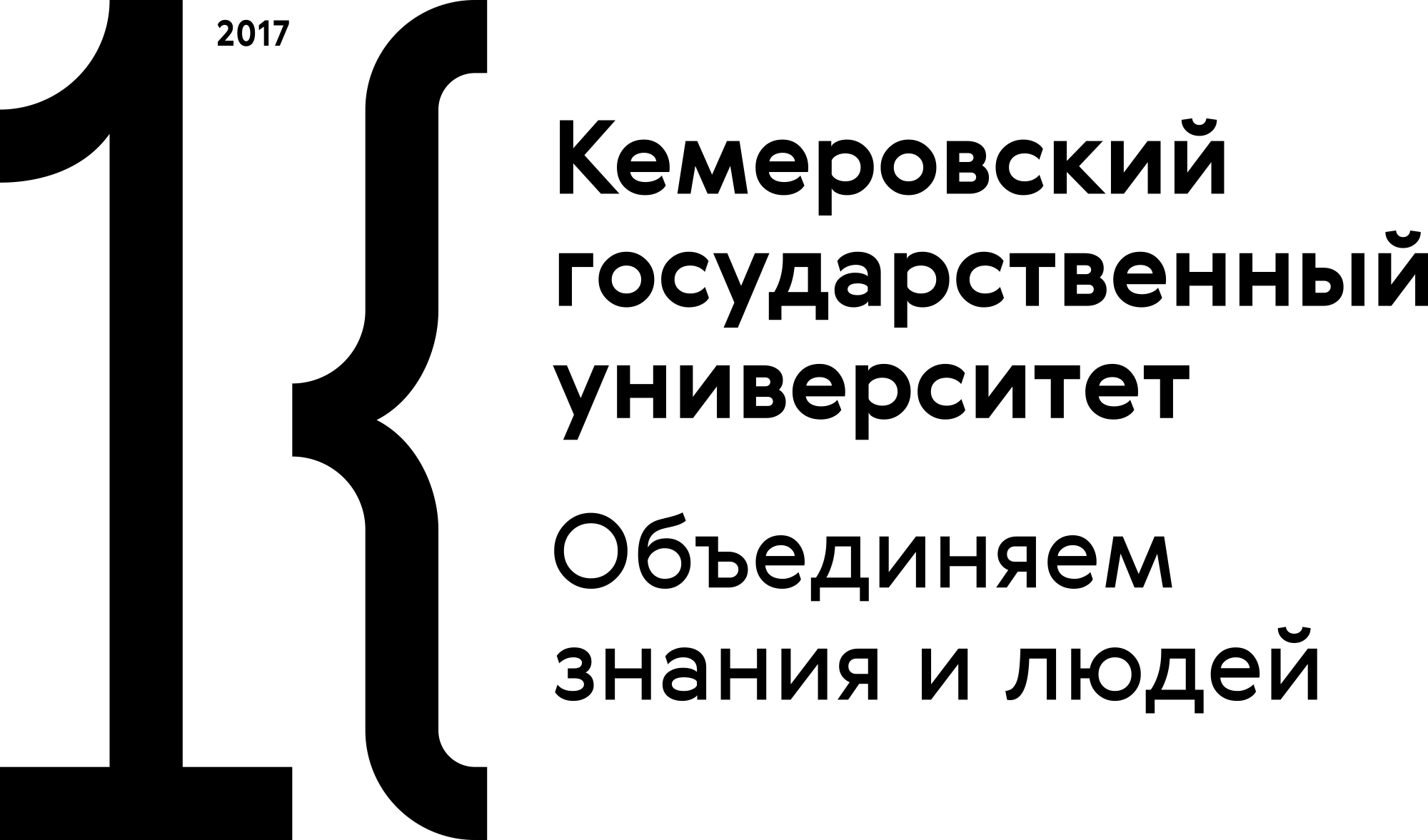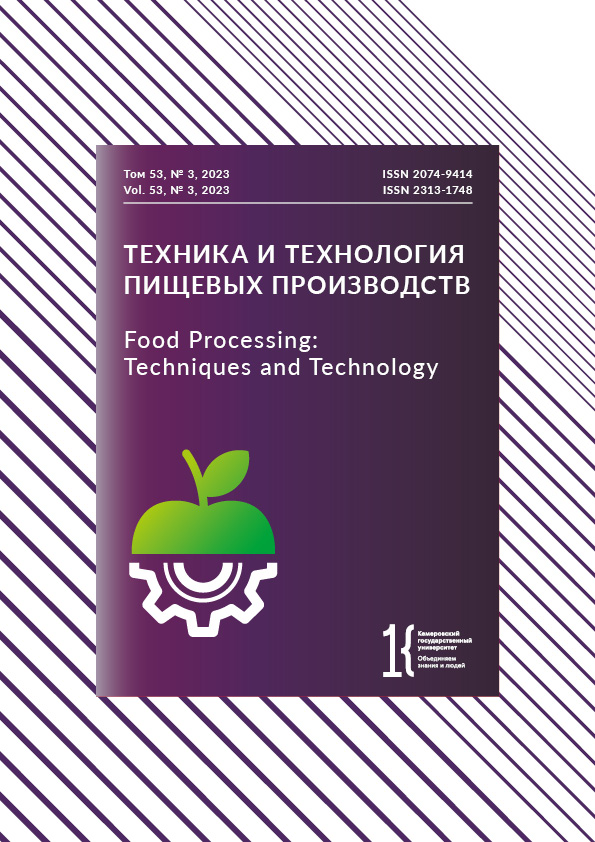Минск, Беларусь
Минск, Беларусь
Минск, Беларусь
Минск, Беларусь
Минск, Беларусь
Минск, Беларусь
Ставрополь, Россия
Ставрополь, Россия
Ферментативный гидролиз белков молока – эффективный технологический прием для повышения их пищевой и биологической ценности, а также снижения аллергенного потенциала. Последующее комплексообразование пептидов с циклодекстринами (ЦД) направлено на снижение горечи гидролизованных белков. Целью работы являлось получение гидролизатов сывороточных белков молока и комплексов включения пептидов с ЦД, определение пептидного состава расщепленных белков молока, оценка биоактивных и органолептических свойств гидролизатов и комплексов включения. Объекты исследования: ферментативные гидролизаты сывороточных белков молока с глубокой степенью гидролиза и их комплексы включения с β- и γ-ЦД. Для расщепления белков применяли протеазу алкалазу (Alcalase®2.4L FG), гидролизаты подвергали микро- и ультрафильтрации (отсечка 10 кДа). Пептидный состав гидролизованных белков определяли высокоэффективной жидкостной хроматографией и хромато-масс-спектрометрией, антимутагенную активность – в тесте Эймса, антибактериальное действие – импедиметрическим методом. Антиоксидантный эффект оценивали с использованием флуориметрического и спектрофотометрического подходов, антигенные свойства – по данным конкурентного иммуноферментного анализа. Уровень горечи опытных образцов устанавливали органолептически. Подобраны режимы расщепления сывороточных белков молока алкалазой для достижения эффективной микро- и ультрафильтрации гидролизата. Получены гипоаллергенные пептидные фракции и их комплексы включения с β- и γ-ЦД. В результате протеолиза молочной сыворотки и последующей фильтрации с/без тиндализации установлено снижение остаточной антигенности в 265/589 раз соответственно. По данным флуориметрического метода показано увеличение антиоксидантной активности гидролизата в составе комплексов с β/γ-ЦД в 1,79/1,90 раза соответственно. Связывание β-ЦД с пептидами обусловило возрастание их антимикробного действия в отношении Escherichia coli АТСС 8739 и Staphylococcus aureus АТСС 6538. Эффективное снижение горечи установлено после взаимодействия гидролизата с β-ЦД. Ферментативные гидролизаты белков молока и их комплексы включения с ЦД являются перспективными заменителями нативного белкового компонента для продуктов питания функционального назначения, что обусловлено их низким аллергенным потенциалом, приемлемым вкусом и подтвержденными биоактивными свойствами.
Сывороточные белки, ферментативный гидролиз, ультрафильтрация, степень гидролиза, пептиды, циклодекстрин, биологическая активность
1. Aruna V, Chandrakala V, Angajala G, Nagarajan ER. Proteases: An overview on its recent industrial developments and current scenario in the revolution of biocatalysis. Materials Today: Proceedings. 2023;92:565–573. https://doi.org/10.1016/j.matpr.2023.03.806
2. Tacias-Pascacio VG, Morellon-Sterling R, Siar EH, Tavano O, Berenguer-Murcia Á, Fernandez-Lafuente R. Use of alcalase in the production of bioactive peptides: A review. International Journal of Biological Macromolecules. 2020;165:2143–2196. https://doi.org/10.1016/j.ijbiomac.2020.10.060
3. Czelej M, Garbacz K, Czernecki T, Wawrzykowski J, Waśko A. Protein hydrolysates derived from animals and plants – a review of production methods and antioxidant activity. Foods. 2022;11(13):1953. https://doi.org/10.3390/foods11131953
4. Ramakrishnan VV, Hossain A, Dave D, Shahidi F. Salmon processing discards: a potential source of bioactive peptides – a review. Food Production, Processing and Nutrition. 2024;6:22. https://doi.org/10.1186/s43014-023-00197-2
5. Freidl R, Garib V, Linhart B, Haberl EM, Mader I, Szépfalusi Z, et al. Extensively hydrolyzed hypoallergenic infant formula with retained T cell reactivity. Nutrients. 2022;15(1):111. https://doi.org/10.3390/nu15010111
6. Gromov DA, Borisova AV, Bakharev VV. Food allergens and methods for producing hypoallergenic foods. Food Processing: Techniques and Technology. 2021;51(2):232–247. (In Russ.). https://doi.org/10.21603/2074-9414-2021-2-232-247; https://www.elibrary.ru/MHOLPD
7. Vandenplas Y, Ksiażyk J, Luna MS, Migacheva N, Picaud J-C, Ramenghi LA, et al. Partial hydrolyzed protein as a protein source for infant feeding: do or don’t? Nutrients. 2022;14(9):1720. https://doi.org/10.3390/nu14091720
8. Maryniak NZ, Sancho AI, Hansen EB, Bøgh KL. Alternatives to cow’s milk-based infant formulas in the prevention and management of cow’s milk allergy. Foods. 2022;11(7):926. https://doi.org/10.3390/foods11070926
9. Soto-Sierra L, Nikolov ZL. Feasibility of membrane ultrafiltration as a single-step clarification and fractionation of microalgal protein hydrolysates. Frontiers in Bioengineering and Biotechnology. 2022;10:957268. https://doi.org/10.3389/fbioe.2022.957268
10. Alavi F, Ciftci ON. Purification and fractionation of bioactive peptides through membrane filtration: A critical and application review. Trends in Food Science and Technology. 2023;131:118–128. https://doi.org/10.1016/j.tifs.2022.11.024
11. Ryazantseva KA, Agarkova EYu, Fedotova OB. Continuous hydrolysis of milk proteins in membrane reactors of various configurations. Foods and Raw Materials. 2021;9(2):271–281. https://doi.org/10.21603/2308-4057-2021-2-271-281; https://www.elibrary.ru/XVLLQE
12. Poulson BG, Alsulami QA, Sharfalddin A, Agammy EFE, Mouffouk F, Emwas AH, et al. Cyclodextrins: structural, chemical, and physical properties, and applications. Polysaccharides. 2021;3(1):1–31. https://doi.org/10.3390/polysaccharides3010001
13. Zhou J, Jia J, He J, Li J, Cai J. Cyclodextrin inclusion complexes and their application in food safety analysis: recent developments and future prospects. Foods. 2022;11(23):3871. https://doi.org/10.3390/foods11233871
14. Yousaf R, Razzaq FA, Asghar S, Irfan M, Khan IU, Khalid SH. Cyclodextrins: An Overview of Fundamentals, Types, and Applications. In: Ali R, editor. Cyclodextrins - Core Concepts and New Frontiers. London: IntechOpen; 2023. https://doi.org/10.5772/intechopen.108078
15. Singh A, Idowu AT, Benjakul S, Kishimura H, Aluko RE, Kumagai Y. Debittering of salmon (Salmo salar) frame protein hydrolysate using 2-butanol in combination with β-cyclodextrin: Impact on some physicochemical characteristics and antioxidant activities. Food Chemistry. 2020;321:126686. https://doi.org/10.1016/j.foodchem.2020.126686
16. Xia Y, Zhu L, Wu G, Liu T, Li X, Wang X, et al. Comparative study of various methods used for bitterness reduction from pea (Pisum sativum L.) protein hydrolysates. LWT. 2022;159:113228. https://doi.org/10.1016/j.lwt.2022.113228
17. Способ производства гидролизата сывороточных белков: пат. 2663583C2 Рос. Федерация. № 2015156941 / Ю. Я. Свириденко [и др.]; заявл. 30.12.2015; опубл.07.08.2018. 15 с. Бюл. № 22.
18. Способ получения ферментативного сывороточных белков: пат. 2528068C1 / А. Ю. Просеков [и др.]; заявл. 04.04.2013; опубл. 10.09.2014. 8 с. Бюл. №. 25.
19. Способ получения гидролизата сывороточных белков с высокой степенью гидролиза и гидролизат сывороточных белков с высокой степенью гидролиза: пат. 2428047C1 Рос. Федерация. № 2010105819/10 / В. И. Круглик [и др.]; заявл.19.02.2010; опубл. 10.09.2011. 20 с. Бюл. № 25.
20. Golovach TN, Dudchik NV, Veremeenko EG, Tsygankov VG, Bondarchuk AM, Filonyuk VA, et al. Evaluation of antimutagenic and antifungal properties, parameters of acute toxicity and sensitizing activity of enzymatic whey protein hydrolysate. Foods and Raw Materials. 2016;4(2):38–47. http://doi.org/10.21179/2308-4057-2016-2-38-47; https://www.elibrary.ru/XKQBGN
21. Milentyeva IS, Davydenko NI, Rasshchepkin AN. Casein proteolysis in bioactive peptide production: optimal operating parameters. Food Processing: Techniques and Technology. 2020;50(4):726–735. (In Russ.). https://doi.org/10.21603/2074-9414-2020-4-726-735; https://www.elibrary.ru/AELHQJ
22. Halavach TM. Hypoallergenic hydrolysates of whey proteins with average degree of hydrolysis. AIP Conference Proceedings. 2022;2390(1):030030. https://doi.org/10.1063/5.0069050
23. Halavach TM, Kurchenko VP, Tarun EI, Yantsevich AV, Shchur VV, Tsygankow VG, et al. Effect of hydrolysis degree with alcalase on antioxidant and antigenic properties of whey and colostrum protein hydrolysates. Journal of Agriculture and Food Research. 2024;15:100975. https://doi.org/10.1016/j.jafr.2024.100975
24. Halavach TM, Savchuk ES, Bobovich AS, Dudchik NV, Tsygankow VG, Tarun EI, et al. Antimutagenic and antibacterial activity of β-cyclodextrin clathrates with extensive hydrolysates of colostrum and whey. Biointerface Research in Applied Chemistry. 2020;11(2):8626–8638. https://doi.org/10.33263/BRIAC112.86268638
25. Halavach TM, Kurchenko VP, Tarun EI, Dudchik NV, Yatskou MM, Lodygin AD, et al. Influence of complexation with β- and γ-cyclodextrin on bioactivity of whey and colostrum peptides. International Journal of Molecular Sciences. 2023;24(18):13987. https://doi.org/10.3390/ijms241813987
26. Kalb VF Jr, Bernlohr RW. A new spectrophotometric assay for protein in cell extracts. Analytical Biochemistry. 1977;82(2):362–371. https://doi.org/10.1016/0003-2697(77)90173-7
27. Walter. Measuring Protein Concentration in the Presence of Nucleic Acids by A280/A260: The Method of Warburg and Christian. Cold Spring Harbor Protocols. 2006;2006(1):pdb.prot4252. https://doi.org/10.1101/pdb.prot4252
28. Borlinghaus J, Reiter J, Ries M, Gruhlke MCH. Screening procedures and tests for antioxidants. In: Preedy VR, editor. Pathology: Oxidative Stress and Dietary Antioxidants. Academic Press; 2020. pp. 389–395. https://doi.org/10.1016/B978-0-12-815972-9.00037-8
29. Hernández-Ledesma B, Quirós A, Amigo L, Recio I. Identification of bioactive peptides after digestion of human milk and infant formula with pepsin and pancreatin. International Dairy Journal. 2007;17(1):42–49. https://doi.org/10.1016/j.idairyj.2005.12.012
30. Chambers JM, Freeny AE, Heiberger RM. Analysis of Variance; Designed Experiments. In: Chambers JM, Hastie T, editors. Statistical Models in S. California: Routledge; 1992. Pp. 145–190.
31. Dunnett CW. A Multiple Comparison Procedure for Comparing Several Treatments with a Control. Journal of the American Statistical Association. 1955;50(272):1096–1121. https://doi.org/10.2307/2281208
32. Miller RG. Simultaneous Statistical Inference. New York: Springer Verlag; 1981. 299 p.
33. Yandell BS. Practical Data Analysis for Designed Experiments. Madras: Chapman and Hall; 1997. 312 p.
34. Team RC. R Foundation for Statistical Computing. R: A Language and Environment for Statistical Computing. 2014;1.
35. Signorell A, Aho K, Alfons A, Anderegg N, Aragon T, Arachchige C, et al. Tools for Descriptive Statistics. R Package Version. 2019; 28(17).
36. Nikoo M, Regenstein JM, Yasemi M. Protein hydrolysates from fishery processing by-products: production, characteristics, food applications, and challenges. Foods. 2023;12(24):4470. https://doi.org/10.3390/foods12244470
37. Mansinhbhai CH, Sakure A, Maurya R, Bishnoi M, Kondepudi KK, Das S, et al. Significance of whey protein hydrolysate on anti-oxidative, ACE-inhibitory and anti-inflammatory activities and release of peptides with biofunctionality: an in vitro and in silico approach. Journal of Food Science and Technology. 2021;59(7):2629–2642. https://doi.org/10.1007/s13197-021-05282-3
38. Kleekayai T, O’Neill A, Clarke S, Holmes N, O’Sullivan B, FitzGerald RJ. Contribution of hydrolysis and drying conditions to whey protein hydrolysate characteristics and in vitro antioxidative properties. Antioxidants. 2022;11(2):399. https://doi.org/10.3390/antiox11020399
39. Jo YJ, Cho HS, Chun JY. Antioxidant activity of β-cyclodextrin inclusion complexes containing trans-cinnamaldehyde by DPPH, ABTS and FRAP. Food Science and Biotechnology. 2021;30(6):807–814. https://doi.org/10.1007/s10068-021-00914-y
40. Zheng X, Du Y, Chai Y, Zheng Y. A DFT-based mechanism analysis of the cyclodextrin inclusion on the radical scavenging activity of apigenin. Antioxidants. 2023;12(11):2018. https://doi.org/10.3390/antiox12112018
41. Abbas Z, Sulaiman G, Jabir M, Mohammed H, Mohammed S. Antioxidant properties of galangin with β-cyclodextrin: an in Vitro and in Vivo. Journal of Applied Sciences and Nanotechnology. 2023;3(1):80–89. https://doi.org/10.53293/jasn.2022.4876.1157
42. Liang X, Qian G, Sun J, Yang M, Shi X, Yang H, et al. Evaluation of antigenicity and nutritional properties of enzymatically hydrolyzed cow milk. Scientific Reports. 2021;11:18623. https://doi.org/10.1038/s41598-021-98136-z
43. Liang X, Yang H, Sun J, Cheng J, Luo X, Wang Z, et al. Effects of enzymatic treatments on the hydrolysis and antigenicity reduction of natural cow milk. Food Science and Nutrition. 2020;9(2):985–993. https://doi.org/10.1002/fsn3.2066
44. Liang X, Gou X, Hu X, Pu Y, Yan S, Zhou W, et al. Evaluation of the immunoreactivity and quality characteristics of cow milk following combined fermentation and enzymatic hydrolysis. LWT – Food Science and Technology. 2023;185:115161. https://doi.org/10.1016/j.lwt.2023.115161
45. Rubak YT, Nuraida L, Iswantini D, Prangdimurti E, Sanam MUE. Peptide profiling of goat milk fermented by Lactobacillus delbrueckii ssp. delbrueckii BD7: Identification of potential biological activity. Biodiversitas. 2021;22(8):3136–3145. https://doi.org/10.13057/biodiv/d220807
46. Suárez‐Jiménez GM, Burgos‐Hernández A, Torres‐Arreola W, López‐Saiz CM, Velázquez Contreras CA, Ezquerra‐Brauer JM. Bioactive peptides from collagen hydrolysates from squid (Dosidicus gigas) by‐products fractionated by ultrafiltration. International Journal of Food Science and Technology. 2019;54(4):1054–1061. https://doi.org/10.1111/ijfs.13984
47. Mokhtari R, Rezaei M, Kazemi Fard M, Dirandeh E. Evaluation of Antimicrobial and Antioxidant Activities of Casein-Derived Bioactive Peptides Using Trypsin Enzyme. Journal of Food Quality. 2023;2023:1-9. https://doi.org/10.1155/2023/1792917
48. Zanutto-Elgui MR, Vieira JCS, Prado DZ do, Buzalaf MAR, de Padilha PM, de Oliveira DE, et al. Production of milk peptides with antimicrobial and antioxidant properties through fungal proteases. Food Chemistry. 2019;278:823–831. https://doi.org/10.1016/j.foodchem.2018.11.119
49. Vargas-Bello-Pérez E, Márquez-Hernández RI, Hernández-Castellano LE. Bioactive peptides from milk: animal determinants and their implications in human health. Journal of Dairy Research. 2019;86(2):136–144. https://doi.org/10.1017/S0022029919000384
50. Chaudhary A, Bhalla S, Patiyal S, Raghava GPS, Sahni G. FermFooDb: A database of bioactive peptides derived from fermented foods. Heliyon. 2021;7(4):e06668. https://doi.org/10.1016/j.heliyon.2021.e06668
51. Wan GY, Lam KM, Wong II, FONG P, Meng LR. Extraction of antibacterial peptides against Helicobacter pylori from bovine milk casein. Archives of Medical Science. 2022;18(2):376–381. https://doi.org/10.5114/aoms/109942
52. Khazaei Monfared Y, Mahmoudian M, Hoti G, Caldera F, López Nicolás JM, Zakeri-Milani P, et al. Cyclodextrin-based nanosponges as perse antimicrobial agents increase the activity of natural antimicrobial peptide nisin. Pharmaceutics. 2022;14(3):685. https://doi.org/10.3390/pharmaceutics14030685
53. Hu Y, Xing K, Li X, Sang S, McClements DJ, Chen L, et al. Cyclodextrin carboxylate improves the stability and activity of nisin in a wider range of application conditions. Npj Science of Food. 2023;7:20. https://doi.org/10.1038/s41538-023-00181-7
54. Liu H, Wang L, Yao C. Optimization of antibacterial activity and biosafety through ultrashort peptide/cyclodextrin inclusion complexes. International Journal of Molecular Sciences. 2023;24(19):14801. https://doi.org/10.3390/ijms241914801
55. Liu B, Li N, Chen F, Zhang J, Sun X, Xu L, et al. Review on the release mechanism and debittering technology of bitter peptides from protein hydrolysates. Comprehensive Reviews in Food Science and Food Safety. 2022;21(6):5153–5170. https://doi.org/10.1111/1541-4337.13050
56. Mirzapour-Kouhdasht A, McClements DJ, Taghizadeh MS, Niazi A, Garcia-Vaquero M. Strategies for oral delivery of bioactive peptides with focus on debittering and masking. Npj Science of Food. 2023;7:22. https://doi.org/10.1038/s41538-023-00198-y












